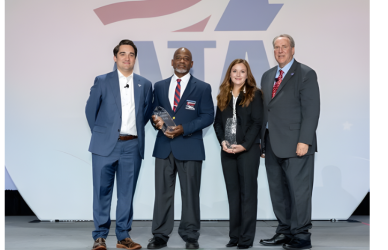The United States and the European Union have joined forces to form a shared vision for the charging of electric-heavy duty vehicles, as agreed upon at the recent Trade and Technology Council meeting in Sweden.
This announcement comes as a result of the efforts of two renowned institutions – the EU’s Joint Research Centre and the U.S. Department of Energy’s Argonne National Laboratory – as outlined in a White House statement.
“We recognize the Megawatt Charging System (MCS) adoption by IEC, SAE and ISO for the charging of electric heavy-duty vehicles, where the alignment of our approaches to standardization will be critical for the roll-out of dedicated recharging infrastructure,” said the White House statement.
Both sides applaud efforts toward compatibility of physical connectors (plugs) and a common vehicle-to-grid communication interface for all power levels, they said, “recognizing that additional solutions may be possible among private sector operators.”
This partnership will create the ultimate test procedure that guarantees complete interoperability and impeccable system charge performance, taking power-charging up to MCS levels. Working hand in hand, these two powerhouses are set to revolutionize high power-charging across transatlantic borders.
“During our meeting in Luleå, we displayed the MCS physical connector as well as a truck and recharging station — a visible proof of this success,” the White House statement said, noting that this cooperation also paves the way for possible MCS applications in inland shipping, marine, mining, and aviation sectors, among others.
Scania and ABB E-mobility are on a mission to transform the charging game for heavy-duty vehicles. Just weeks ago, the companies successfully installed and tested a pilot Mobile Charging Station (MCS) that slashes charging times in half. This breakthrough is thanks to their partnership with CharIN, a German-based non-profit charging initiative, and marks a significant achievement in the deployment of high-power chargers designed for heavy-duty vehicles.
Source: TruckingInfo











